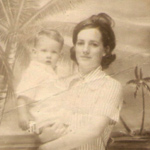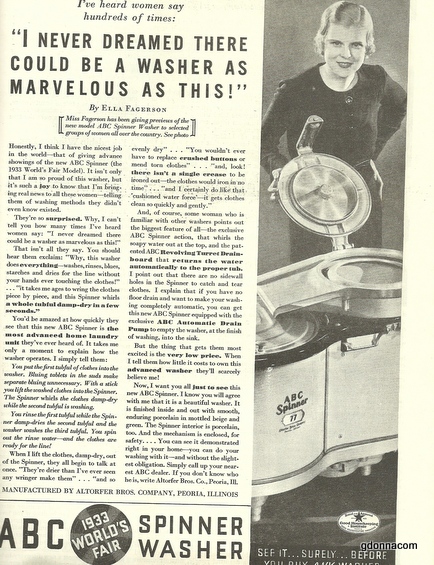
One of our vintage magazines from 1932 has an advertisement showing a brand new washing machine that had a side spinner. Most of the washing machines had a top roller that squeezed out the water. You would have to be very careful about keeping your fingers away from the roller or it would smash your finger.
I have fond memories of the old round washers with the wringer on top as I would help my grandmother wash clothes out in the backyard. The smell of soap in the outside air is something I never forget.
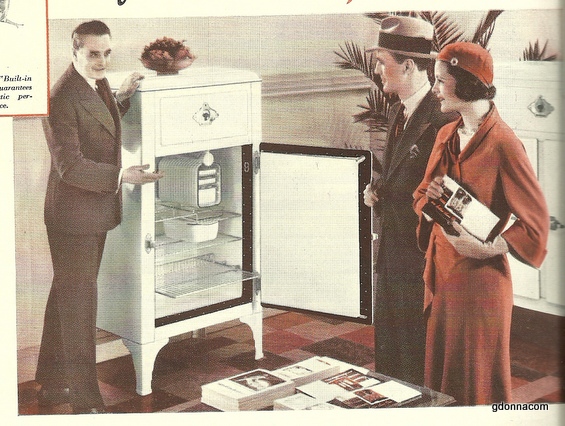
New electric appliances were coming to market during the 1930's and 1940's. During WW2 there was severe rationing and the production of many household items was put on hold.
Many people that lived in rural areas did not have electricity during the 1930's and 40's and depending on what part of the country one lived that extended into the 1950's and 1960's before folks in the rural areas had electricity. In the cities electricity was getting more common. This advertisement above was for a new Westinghouse electric refrigerator. During that time Ice boxes that looked somewhat refrigerators were more common as the ice trucks would deliver blocks of ice for those with ice boxes. I remember the ice trucks and the big blocks of ice.

This brings me to our new washing machine. It is a whopping 25 inches tall! It comes up to nearly the top of my thigh. It is very tiny but it actually does a very good job. It has a side spinner similar to the washing machine in the first photo.
This little machine is called a Panda. I am not advertising anything, I am just showing you what we purchased.
Our plans are to finish our little camper we call the "Shabby Cabby" and this will be the washing machine for the little travel trailer.
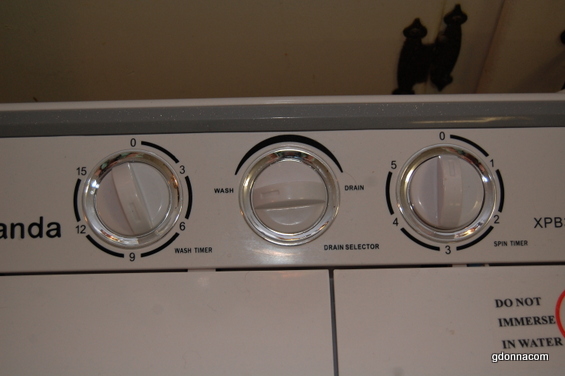
It has two compartments, the washer side and then the right side has a small spinner that works remarkably well.
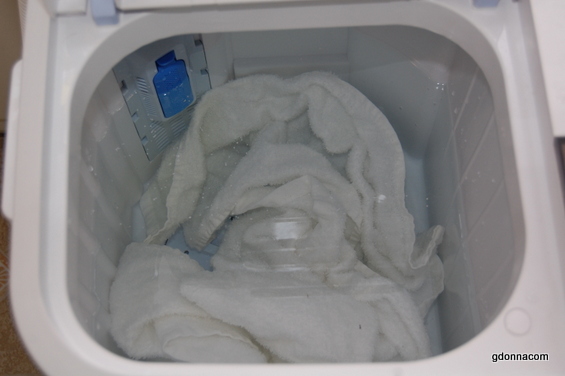
The small washer side here shown above is holding five gallons of water. I can still put more water in the washer but I did not need it for what I was washing. It will hold about what I would put in a small load in my regular top loading washer. I can wash a few things, pull them out and squeeze the water out, put them in a pail and add more items.
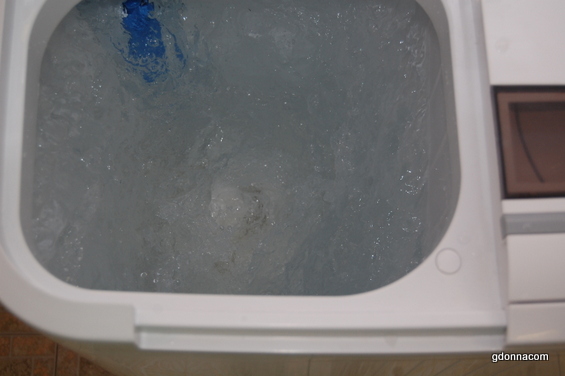 It has a very strong agitation, it goes one way, stops and goes the other way throughout the wash.
It has a very strong agitation, it goes one way, stops and goes the other way throughout the wash.

This small hole is where I put a hose that came with the washer and I connect one in to this and the other end to the kitchen faucet or bathroom faucet to fill the washer. The washer can also be filled simply by pouring water into the washer side. There does not have to be a water connection. The entire unit only weighs 33 pounds and can be moved easily.
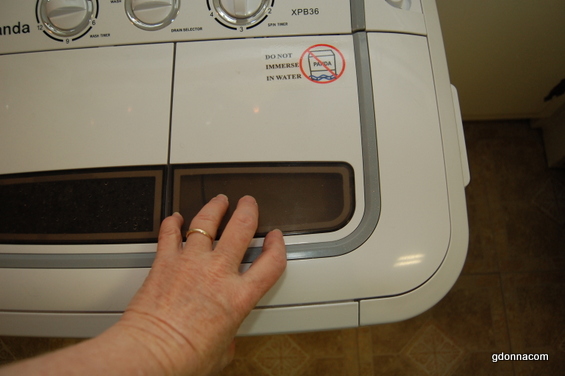
This is the spinner side
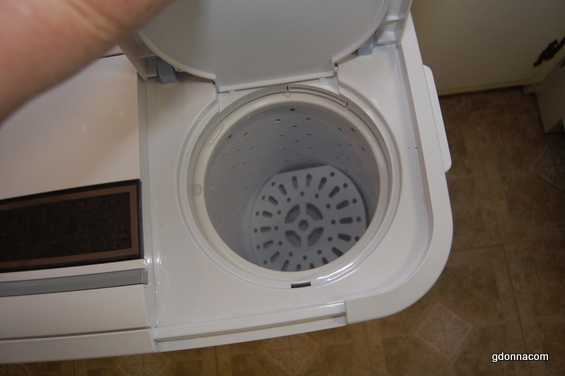
There are two doors, the outer then the lid shown above where my hand is showing and then there is a balancing pressing wheel down inside that i remove before placing items in the spinner.
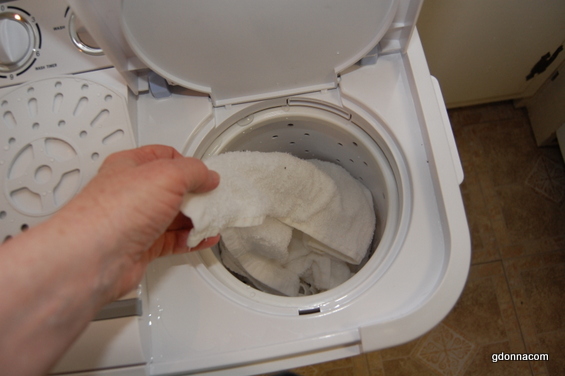
I put the items inside the spinner
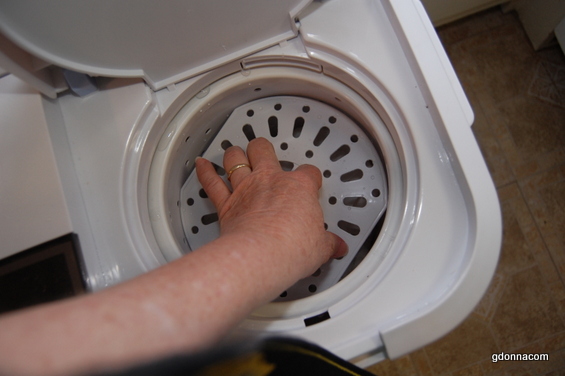
Put the wheel on top and press down

Close both lids, the inside lid
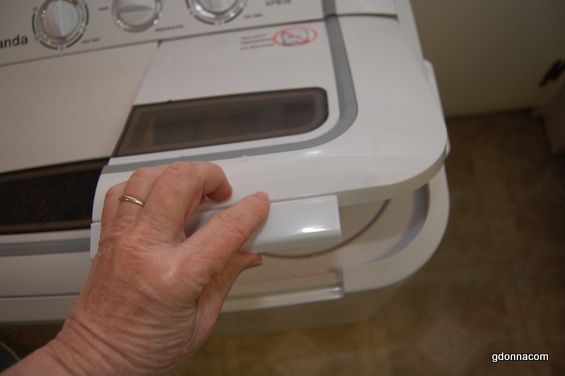
The top lid
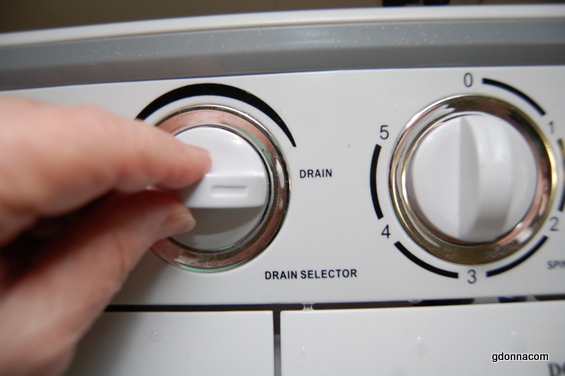
Turn to drain which is a pump that turns on....
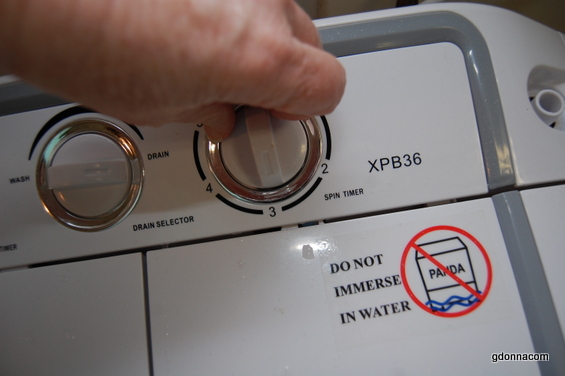
Select the spin time...

Now remove the items... They seem better spun dry than my regular washer which helps when drying clothes on a clothesline.
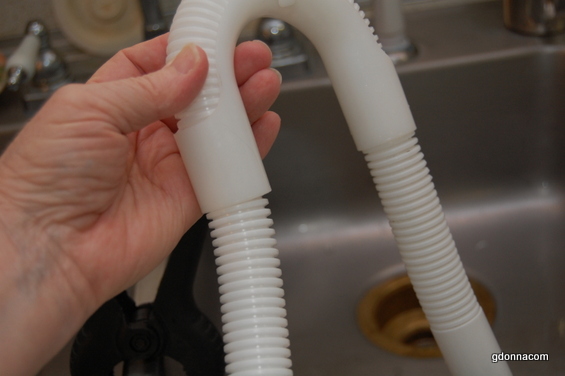
This is the drain hose that can be placed in a kitchen sink....
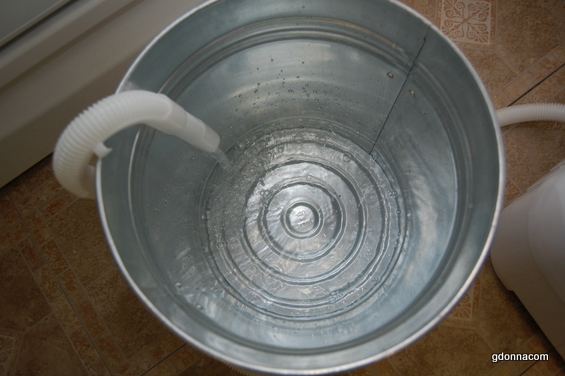
Or a pail because I use the rinse water to water the plants.
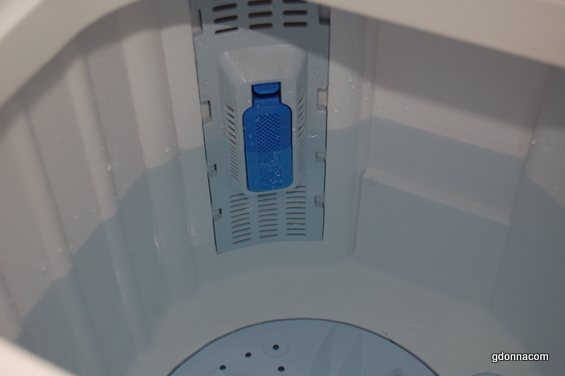
The inside has three levels for the water.
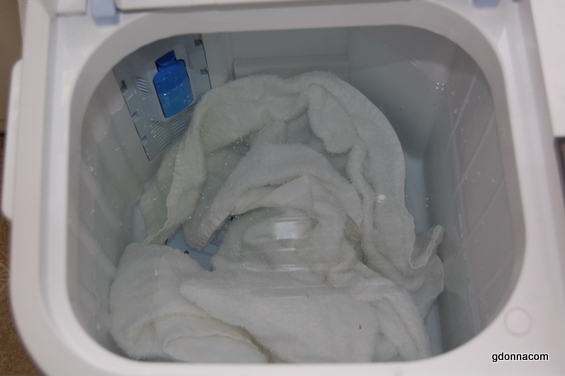
What is important to remember with this washer is everything is in stages and must be repeated. Fill, Wash, remove each item, squeeze it out, place in a bucket, drain soapy water, Refill, place clothes back in washer, now rinse, remove each item again, squeeze water out, place in bucket. Then drain rinse water. Now shake out squeezed items, add a few items at a time to spinner, remove items, add more etc. So it takes a little longer with this washer and you have to stay with it because it is manual but it gets the clothes very clean and as well as a large washer.
I think it would be very good for small apartments, travel trailers etc. I use it when I have a lot of wash to do as an extra washer.
In a way, it reminds me of my Grandmothers wringer washer because we had wash tubs beside the wringer washer to catch the clothes as they came out of the wringer. then we had to empty the wash water and add rinse water. Depending on how much laundry some times an extra tub was used for rinsing. The difference is it has the spinner instead of the wringer.
I hope this article helps in some way. Grandma Donna
